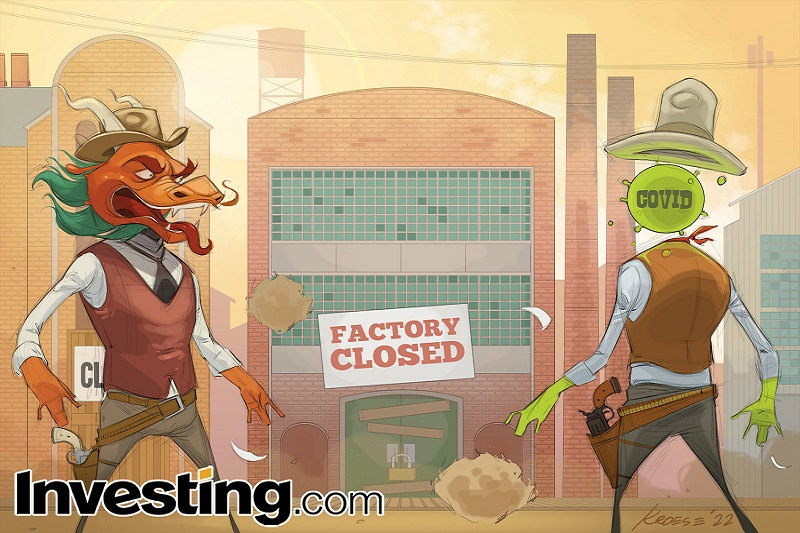By Geoffrey Smith
Investing.com -- China’s economy is facing its biggest test since the Covid-19 coronavirus erupted in Wuhan two years ago.
The emergence of new strains and substrains of Covid-19 was always likely to challenge Beijing’s zero-tolerance policy, forcing ever stricter lockdowns to contain a disease that is becoming less dangerous at the same time as it grows more infectious.
And so it has proved. Omicron and its sub-variant BA.2 have broken through the country’s defenses. Even official figures, which were widely considered to have underreported the actual state of affairs in Wuhan, now show case rates at their highest in two years. They don’t acknowledge any deaths from the disease in the last week, but unverified social media footage speaks of a health system under enormous strain.
While other countries are now able to manage high numbers of infections without their health systems being overrun, Beijing doesn’t have that confidence. It continues to insist on what it calls the “dynamic zero” policy of complete suppression.
It wasn’t supposed to be like this. Xi Jinping signaled in a speech in mid-March that the government would try harder to minimize the impact of health measures on economic life. Instead, almost all of Shanghai’s 25 million residents are firmly locked down - some at the office, but most at home. Factories are closed and delays at ports are lengthening again, threatening a new wave of supply chain-related problems for western industry and retailers.
Shanghai’s port authority denied reports at the weekend that over 300 ships were waiting to get into the port, but similar measures at the port of Shenzhen earlier this year led to a one-third reduction in throughput, according to data from the consultancy FourKites.
Domestic travel has taken a big hit: official data estimate that the number of air passengers on the weekend before this week’s Qingming holiday fell 87% from last year to only 562,000.
The disruption is almost certainly big enough to put China’s official growth target this year of 5.5% in jeopardy. Already in March, the world’s largest manufacturing sector fell back into contraction, with both the official purchasing managers index (which tracks mainly the big state-owned enterprises) and the Caixin PMI, which tracks smaller and private businesses, falling below the 50 level that signifies growth.
But the disruption also threatens to create fresh product shortages in western markets, ensuring that the spike in inflation, both at the producer and consumer level, stays higher, for longer, than first thought. The American Chamber of Commerce in Shanghai said that 82% of its members had suffered “slowed or reduced production” as a result of the lockdowns. Tesla’s factory there, which makes 16,000 cars a week, has been shut since March 28.
The only good news, economically speaking, is that this wave of outbreaks comes at a time when global demand for manufactured goods is beginning to revert to the mean, after surging during the pandemic. The stress on global supply chains may consequently be less than it would have been a year ago. In almost all of China’s key export markets, Covid is largely history. Global deaths from the disease are at their lowest since March 2020. Hospitalizations have plummeted even though case rates are close to record highs, mask mandates have been lifted, and stadiums and restaurants are full again. U.S. data released last week show a clear swing of the pendulum back to spending on services such as dining out.
However, the country which Covid-19 struck first is now on course to be its last great victim. Nature has outpaced policy. Unless Beijing can adapt as quickly as the virus, it risks undoing much of its remarkable success in taming it.
